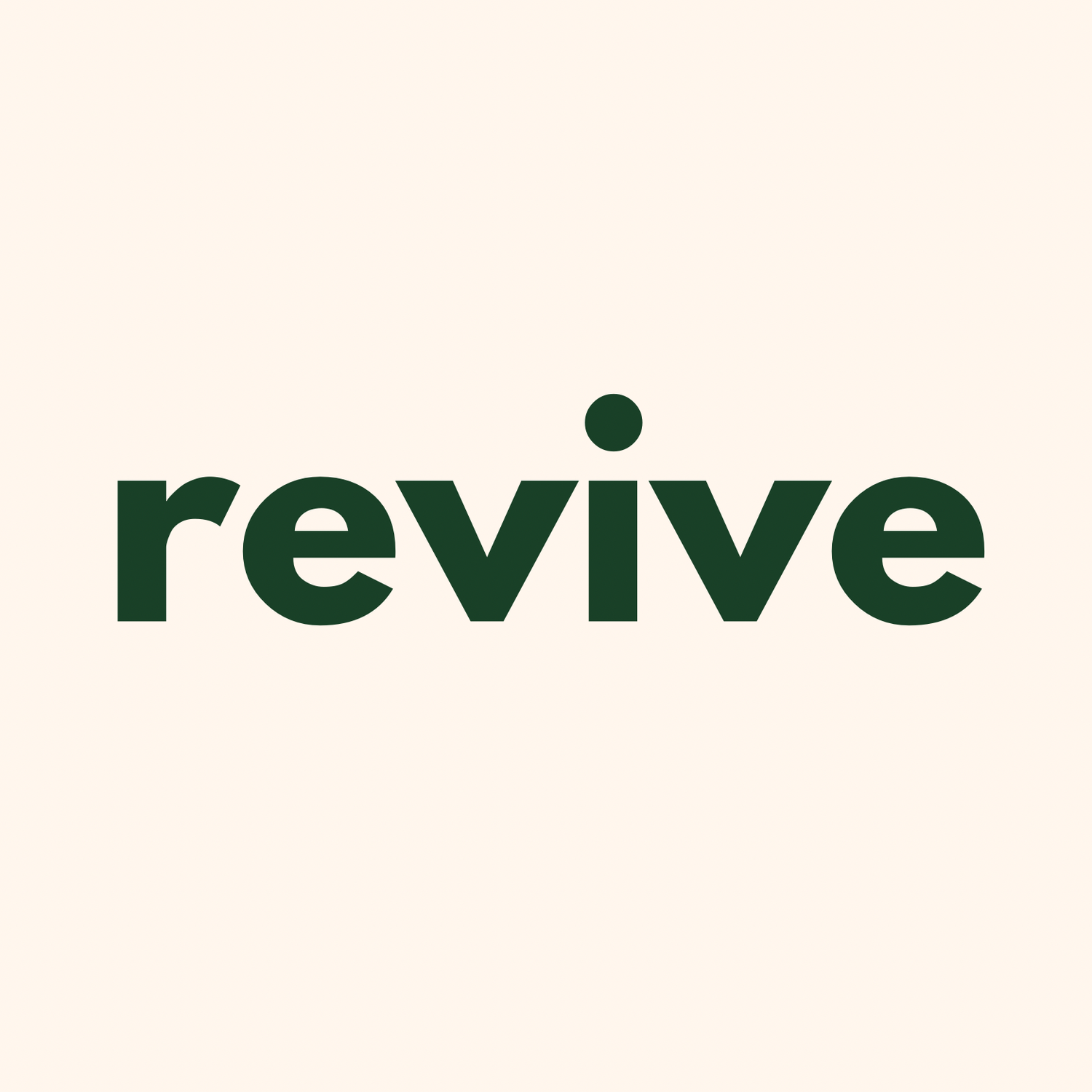Spending My Way to Happiness, One Cart at a Time

-
Let’s be real: retail therapy is practically a love language for some of us, especially me, Taylor, the creator of Living Revive. Whether it’s a pair of cozy socks, a trendy gadget, or that skincare product TikTok won’t stop hyping, there’s something so satisfying about hitting “add to cart.” But why does shopping make us feel so good, especially when we’re upset? Let’s unpack this phenomenon, sprinkle in some science, and explore how retail therapy can be both a joy and a trap.
The Science of Retail Therapy
-

-
When life feels overwhelming, shopping becomes more than just a way to restock on essentials—it turns into a source of dopamine, the brain's "feel-good" chemical. Dopamine is released when we experience something rewarding or pleasurable, such as eating chocolate, receiving a compliment, or achieving a goal. It's the same neurotransmitter that activates when we do something that makes us feel good, and for many, shopping taps into this natural reward system.
The act of shopping, especially for things we desire, sends signals to the brain’s reward centers, giving us a rush of pleasure and satisfaction. This can be anything from trying on a new outfit, finding the perfect gift, or scoring a great deal. In fact, research published in Frontiers in Psychology reveals that the act of purchasing something can momentarily boost our mood and provide a sense of instant gratification. The excitement of snagging a deal, receiving a long-awaited item, or the anticipation of a package arriving at your door—those little moments? That’s dopamine at work.
But here’s the catch: while this rush is real, it’s often short-lived. The initial high from purchasing something new can fade quickly, leaving you wanting more. Over time, your brain starts to crave bigger and more frequent rewards to maintain that same pleasurable feeling. This can lead to a cycle where, despite the fleeting satisfaction, we keep coming back for more in search of that high. Eventually, the very thing that once brought joy might become a fleeting distraction, leaving us to search for something else to satisfy that ever-growing need for a dopamine boost. This is why retail therapy, for some, can become an ongoing habit rather than a simple indulgence.
Why Online Shopping Hits Different
-

-
Let’s talk about online shopping for a second. It’s a whole vibe, right? For me, scrolling through my favorite websites and curating the perfect cart feels like a form of self-care. The whole process—picking out items, browsing through different options, and imagining how I’ll feel when they arrive—becomes a little escape from the daily grind. I’m not the only one who feels this way, either. In fact, a 2023 study by Statista found that 80% of Gen Z shoppers prefer buying online, citing reasons like convenience, fun, and a sense of stress-free shopping that’s hard to replicate in physical stores.
What makes online shopping so addictive, though? Well, one key factor is the unique dopamine boost it gives us. Unlike traditional in-store shopping, where you might have to deal with crowds or limited stock, online shopping offers a smoother, more enjoyable experience. But beyond the ease of finding exactly what we want, online shopping also plays into something even deeper: anticipation. When you place an order, you’re not just buying a product; you’re essentially purchasing a little moment of hope. It’s the belief that when that package arrives, something in your day will feel better, more exciting, or just a little bit more fulfilled. That anticipation is powerful—it builds excitement and fuels the desire to shop more.
This is also why unboxing videos have become such a huge trend. People love watching others open their packages because it taps into that universal enjoyment of surprises and instant gratification. There’s something deeply satisfying about watching someone experience that "wow" moment as they pull their new purchases out of the box. It's like living vicariously through someone else's shopping experience, amplifying the joy that comes from receiving something new and shiny. That emotional high from opening a fresh package, knowing it’s something you’ve been eagerly waiting for, hits differently in the online shopping world—and it’s part of what keeps us coming back for more.
The Emotional Side of Retail Therapy
-

-
Let’s take a deeper dive for a moment. Why is it that we often reach for our wallets when we’re feeling down or overwhelmed? Psychologists believe that shopping serves as a way to reclaim control when life feels out of balance. When everything else seems chaotic or uncertain, making decisions about what to buy can provide a temporary sense of order. We might not be able to control other aspects of our lives, but for that moment, we have the power to choose exactly what we want. It’s like a comforting distraction that helps push aside feelings of stress, anxiety, or even boredom.
For me, online shopping became almost like a ritual during tough times. It wasn’t just about getting a new pair of shoes or another gadget—it was about carving out a space where I could feel in control, even if it was for just a little while. The act of picking something out, deciding on a purchase, and waiting for it to arrive gave me a sense of agency. It was a brief escape from whatever emotional turmoil I was going through. In a world that often feels unpredictable, shopping offered a small, controlled environment where I could exert influence.
That’s the beauty—and the danger—of retail therapy. On one hand, it can be empowering. It provides a quick way to regain a sense of control and make ourselves feel better, even if temporarily. On the other hand, if it becomes a habitual response to every emotional dip, shopping can turn into a coping mechanism. Over time, the act of buying might replace more effective ways of dealing with emotions or stress. What started as an occasional escape can snowball into a pattern that’s harder to break. Like any coping strategy, retail therapy is a double-edged sword—it can offer short-term relief, but it may come at a long-term cost if not kept in check.
When Retail Therapy Becomes a Retail Trap
-

-
Here’s the tea: retail therapy isn’t always as harmless as it seems. While it can offer a temporary escape, it’s easy for shopping to slip into something more problematic. Research from the Journal of Consumer Research shows that emotional shopping can lead to buyer’s remorse, credit card debt, and a cycle where the high of purchasing something new quickly fades, only to be replaced by guilt. Been there, done that. It’s like riding a wave of excitement when you click "buy now," only to crash when the reality of your purchase sets in. The cycle of feeling good for a brief moment, followed by regret, can leave you emotionally drained and financially strained.
That’s when retail therapy shifts from being a harmless distraction to becoming a retail trap. The key is recognizing the line between treating yourself and overindulging. For me, it’s all about checking in with my emotions before I hit that checkout button. Am I shopping because I genuinely need something—or is it more about filling a void, distracting myself, or trying to find a quick fix for a bigger emotional issue? Being honest with myself helps me avoid using shopping as a way to cope with stress or loneliness.
The trick is moderation. Retail therapy can be healthy when it’s done consciously and in balance, but when it becomes a knee-jerk reaction to every emotional slump, it can spiral into something less satisfying and more damaging. It’s important to remember that the thrill of buying something new isn’t a long-term solution to emotional needs, and recognizing when it crosses that line can help prevent shopping from becoming a trap.
Healthy Ways to Embrace Retail Therapy
-

Treat yourself, but don’t treat your credit score to a meltdown
-

Ask yourself, “Do I really love this?” If it’s not a heck-yes, it’s a no
-

Leave items in your cart for 24 hours. If you’re still thinking about them, go for it
-
Those sale emails? Unsubscribe. Your wallet will thank you
-
Retail therapy can feel like an instant mood booster when you're in need of a pick-me-up. Let’s be honest—there’s something satisfying about the excitement of clicking “Add to Cart” and imagining all the joy your new purchase will bring. But here’s the truth: when done mindfully, retail therapy can be a small act of self-care that helps lift your spirits, especially if you’re making a thoughtful purchase that aligns with your goals or brings a touch of joy to your day. The trick is knowing when it’s a genuine moment of treating yourself and when it’s just a quick fix to mask deeper feelings.
Living Revive, for me, isn’t just about selling products—it’s about cultivating a lifestyle that encourages balance, intention, and true joy. It’s about helping you create a life where you don’t just “buy” happiness but instead find fulfillment in mindful decisions that contribute to your overall well-being. Whether it’s choosing products that align with your values or spending your time on things that light you up, it’s all about living a life that feels good in the long run. In that sense, it’s not just about what you own, but the mindset that surrounds it.
So next time you’re scrolling through your favorite online store or putting things in your cart, take a step back and ask yourself: Is this purchase going to bring you lasting joy, or is it just a temporary distraction? It’s perfectly okay to indulge every now and then—treating yourself can be a healthy way to boost your mood. But true happiness, the kind that fills you up from the inside out, doesn’t come from the contents of a shopping cart. It comes from knowing when to indulge and when to step back and find contentment in the little things. Happiness is about living intentionally, making choices that align with your values, and finding peace with what you already have.
So, while I’ll admit that I might still click “checkout” every now and then (because let’s face it, those cute boots aren’t going to buy themselves), I’m also learning to savor the moments in between. I’m learning to find joy in simplicity, in the little rituals that bring me peace, and in the act of slowing down enough to truly appreciate the life I’m building. After all, the best joy is the kind that doesn’t come in a package—it’s the kind that’s already inside you, waiting to be rediscovered.
Now, if you’ll excuse me, I have a package to track. But hey, we all need our little thrills, right? 😉

